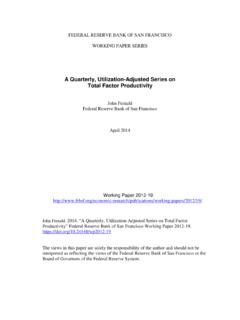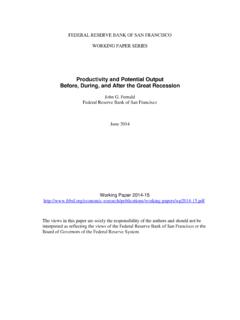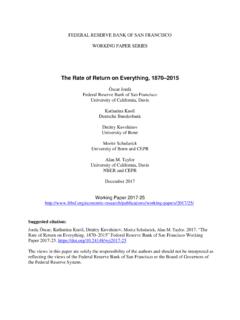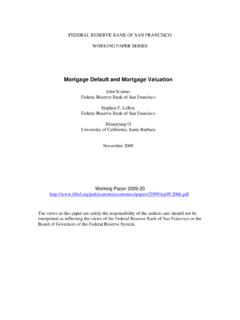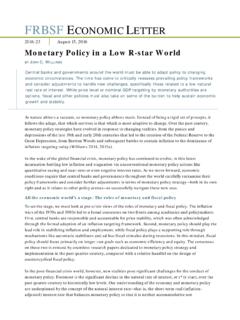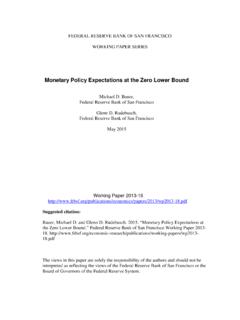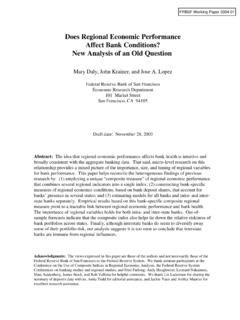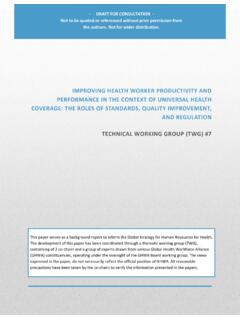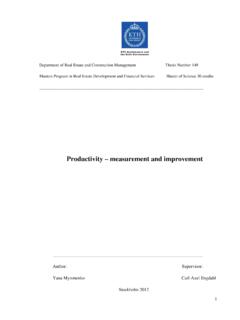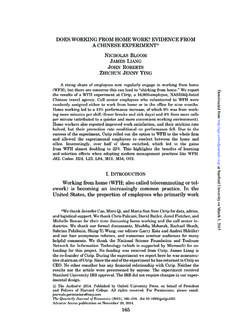Transcription of PRODUCTIVITY GROWTH IN THE INDUSTRIAL REVOLUTION
1 PRODUCTIVITY GROWTH IN THE INDUSTRIAL REVOLUTION : A NEW GROWTH ACCOUNTING PERSPECTIVE Nicholas Crafts (London School of Economics) January 2002 Funding from ESRC grant R000239536 is gratefully acknowledged. I am grateful for helpful suggestions from Bob Allen, Tam Bayoumi, Steve Broadberry, Bill Kennedy, Tim Leunig, and Joachim Voth and for comments by seminar participants at Cambridge, Glasgow, Southampton, and Universidade Nova de Lisboa. I am responsible for all errors. 1 Abstract The issue of why PRODUCTIVITY GROWTH during the British INDUSTRIAL REVOLUTION was slow despite the arrival of famous inventions is revisited using a GROWTH accounting methodology based on an endogenous innovation model and the perspective of recent literature on general purpose technologies.
2 The results show that steam had a relatively small and long-delayed impact on PRODUCTIVITY GROWTH when benchmarked against later technologies such as electricity or ICT. Even so, technological change including embodiment effects accounted entirely for the acceleration in labor PRODUCTIVITY GROWTH that allowed the economy to withstand rapid population GROWTH without a decline in living standards. 2 GROWTH accounting has played an important role in the reassessment of British economic GROWTH during the INDUSTRIAL REVOLUTION and the emergence of the Crafts-Harley The results obtained in recent analyses have suggested that total factor PRODUCTIVITY (TFP) GROWTH was quite modest in the decades following the cluster of major inventions (steam engine, spinning mule, puddling etc.)
3 That are identified with the onset of faster INDUSTRIAL GROWTH and much less in the early nineteenth century than was once believed. Table 1 summarizes developments in GROWTH accounting estimates for the INDUSTRIAL REVOLUTION period. The change implied by the Crafts-Harley view can be seen in the difference between Feinstein's early results based on older national income data and those of Crafts based on the newer estimates. The estimates by Antras and Voth confirm that the Crafts-Harley revisions are plausible using an independent procedure based on the price dual approach to TFP measurement.
4 Mokyr has pointed out the implications of the revised TFP GROWTH estimates as follows. "The apparent dominance of invention over abstention, one of the most striking findings of the New Economic History, seems less secure now than it did a decade ago. Clearly it is unwarranted to expect that major technological breakthroughs will lead to more or less simultaneous increases in PRODUCTIVITY ."2 How can one reconcile slow macroeconomic TFP GROWTH with spectacularly successful microeconomic innovations in several important INDUSTRIAL sectors such as cotton textiles and the iron industry? At one level an answer is provided by the disaggregated GROWTH accounting results put forward by Harley which suggest that much of the economy, notably 3including the service sector except for transportation, experienced at best very slow TFP At another level of explanation, recourse might be had to the recent literature on General Purpose Technologies (GPTs).
5 4 A GPT can be defined as "a technology that initially has much scope for improvement and eventually comes to be widely used, to have many uses, and to have many Hicksian and technological complementarities".5 Electricity, steam, and information and communications technology (ICT) are usually seen as among the most important examples. Clearly, it is to be expected that a new GPT will have a substantial positive impact on the rate of TFP GROWTH . However, a key theme of these models of economic GROWTH is that the initial impact of a GPT is either negligible or even possibly negative and that the delay before TFP GROWTH rises appreciably may be considerable.
6 Thus, PRODUCTIVITY GROWTH in the INDUSTRIAL REVOLUTION may have benefited very little from the arrival of steam power until relatively late in the day. These arguments acquire some credibility when the results of a separate stream of research into the social savings of technological change are recalled. Von Tunzelmann estimated that, if James Watt had not invented the improved steam engine in 1769, the national income of Great Britain in 1800 would have been reduced by only about per Similarly, Hawke found that the social savings of railways in England and Wales in 1850 amounted to million when the British gross domestic product was 523 The later US experience of electricity also lends support.
7 While the excitement of the electrical age arrived in the 1880s, the main (very substantial) PRODUCTIVITY impact came only in the 1920s when the possibilities for re-design of the factory were 4 Alternatively, perhaps more attention should be given to the choice of GROWTH accounting methodology. In particular, the development of endogenous GROWTH theory may be thought to imply that the traditional GROWTH accounting techniques based on the neoclassical (Solow) GROWTH model are no longer appropriate. This view has been put forward by Greasley and Oxley whose results are also reported in Table 1.
8 Their approach, based on assuming two factors of production (capital and human capital) which together comprise 'broad capital', leads them to conclude that it "support[s] the endogenous model by removing the need for TFP to play a substantive role in INDUSTRIAL REVOLUTION GROWTH ".9 This is clearly not a way to rehabilitate rapid technological change or 'ingenuity rather than abstention' as the central theme of the INDUSTRIAL REVOLUTION . The methodology proposed by Greasley and Oxley does not, however, adequately reflect the new GROWTH economics and assumes a production function that has no empirical Moreover, their results imply an astonishing rate of return to very modest increases in formal schooling, as is demonstrated in calculations made by While the Greasley and Oxley attempt to revise GROWTH accounting should not be taken seriously, there are other, more promising, possibilities to be explored.
9 Barro has set out a method based on an endogenous innovation model of economic GROWTH . This approach does not seek to abolish TFP GROWTH but rather argues that measured TFP GROWTH generally underestimates the contribution made by technological change to It attributes a larger proportion of GROWTH to innovation by taking explicit account of its embodiment in new varieties of capital goods and might well be regarded as an appropriate way to address the impact of the new technologies of the INDUSTRIAL REVOLUTION , a time famous for new machines. As Feinstein put it, "many forms of technological advance.
10 Can only 5take effect when 'embodied' in new capital goods. The spinning jennies, steam engines, and blast furnaces were the 'embodiment' of the INDUSTRIAL REVOLUTION ".13 GROWTH accounting along these lines has already been widely used to investigate the impact of ICT, the new GPT, on late twentieth century American economic These studies all seek to capture the GROWTH contribution of ICT by estimating components based on ICT capital in use as well as TFP GROWTH . In the light of this discussion, this paper re-examines the TFP GROWTH paradox of the British INDUSTRIAL REVOLUTION using a revised GROWTH accounting methodology similar to those featured in the recent literature on ICT.
